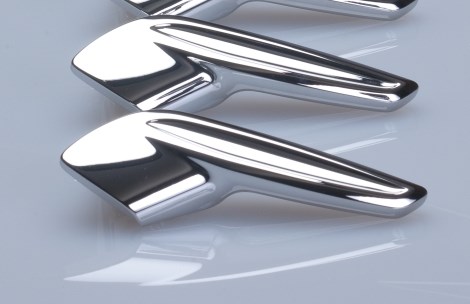Pavco Offering Solutions For Decorative Hex Chrome Alternatives, General Metal Finishing Chemistries
Pavco will showcase systems for alloys, zinc, nickel, chrome, copper and conversion coatings at NASF Sur/Fin trade show in Chicago, June 8-10.

Pavco Inc. continues to grow its diverse portfolio of metal finishing technologies tailored to meet the ever-increasing demands of industry, both domestically and abroad.
With an emphasis on offering solutions for decorative hex chrome alternatives and general metal finishing compliant chemistries, Pavco will showcase its systems for alloys, zinc, nickel, chrome, copper and conversion coatings at the upcoming NASF Sur/Fin trade show in Chicago, June 8-10.
Highlighting the technology will be its prominent zinc nickel alloy technology line. For alkaline processes, the company says that its Ziniloy 3028 can meet the most demanding requirements, while its Ziniloy HD adds unparalleled ductility. For chloride, Pavco says its NiClipse C provides unprecedented characteristics to include uniform alloy deposit throughout a wide current density range for productivity and direct plating on cast iron substrates.
Pavco will also be introducing further alternatives to expand its existing compliant chemistry, decorative tri-chrome and nickel offerings. For more information, visit Pavco.com.
Take a tour of Pavco's Charlotte, North Carolina facility:
-
Related Content
-
Electroplating in the Context of Worldwide Nanotechnology Initiatives: A Heritage Paper
In the first part, a summary is presented on recently established nanotechnology initiatives in various countries around the world. Program funding levels and core activities will be compared to provide a basis for assessing business opportunities for various industries. The second part of the paper looks at specific examples of nanostructures made by electrochemical methods currently at various stages in their development, or already in use.
-
Plating, Anodizing Equipment for Variety of Applications
Titan Metal Fabricators Titan Metal Fabricators, Rightech Fabrications and Optimum Anode Technologies are leading suppliers of equipment for the plating and anodizing industries.
-
SUR/FIN 2023: Capsules from the Technical Sessions I: Emerging Technologies
SUR/FIN 2023 in Cleveland this past June was a resounding success. Due to the efforts of the Technical Activities Committee, ably led by Bill Nebiolo this year, an outstanding program of technical presentations was offered. What follows are summaries of selected presentations from the Emerging Technologies sessions. Additional coverage will be provided in this space in the coming months. The full report can be accessed and printed at short.pfonline.com/NASF23Aug1.















